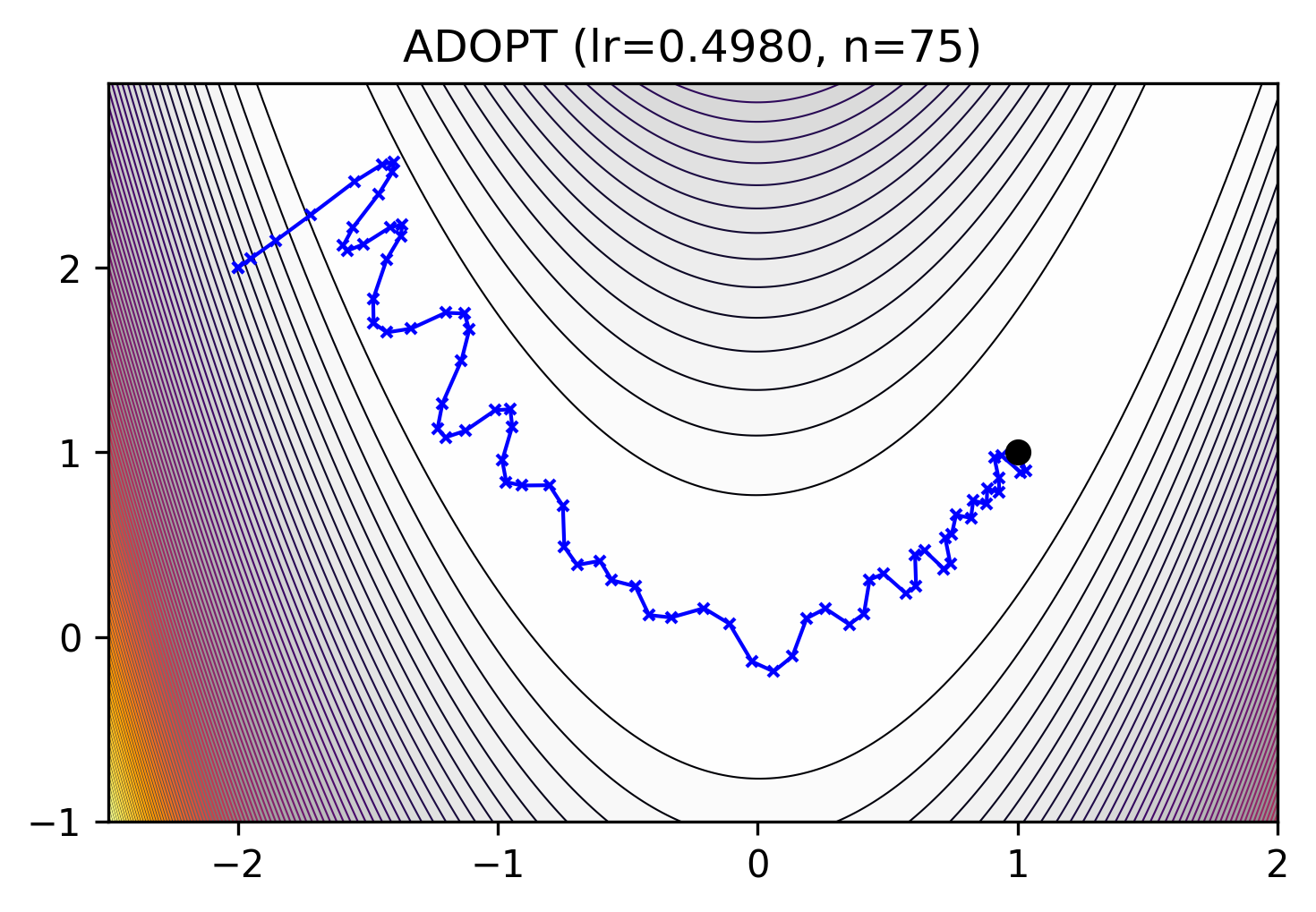mlx_optimizers.ADOPT#
- class ADOPT(learning_rate: float | ~typing.Callable[[~mlx.core.array], ~mlx.core.array], betas: ~typing.List[float] = [0.9, 0.9999], weight_decay: float = 0.0, decouple: bool = False, clip_lambda: ~typing.Callable[[~mlx.core.array], ~mlx.core.array] | None = <function ADOPT.<lambda>>, eps: float = 1e-06)#
ADaptive gradient method with the OPTimal convergence rate [1].
\[\begin{split}m_0 &= \mathbf{0}, \quad v_0 = g_0^2 \\ m_t &= \beta_1 m_{t-1} + (1 - \beta_1) \text{clip} \left( \frac{g_t}{\text{max}(\sqrt{v_{t-1}, \epsilon})}, c_t\right) \\ \theta_{t} &= \theta_{t-1} - \eta m_t \\ v_{t} &= \beta_2 v_{t-1} + (1 - \beta_2) g_t^2\end{split}\][1] Taniguchi, Shohei, et al., 2024. ADOPT: Modified Adam Can Converge with Any \(\beta_2\) with the Optimal Rate. NeurIPS 2024. https://arxiv.org/abs/2411.02853 iShohei220/adopt
- Parameters:
learning_rate (float or callable) – The learning rate \(\eta\).
betas (List[float, float], optional) – The coefficients \((\beta_1, \beta_2)\) used for computing running averages of the gradient and its square. Default:
(0.9, 0.9999)weight_decay (float, optional) – The weight decay. Default:
0.0decouple (bool, optional) – AdamW if
True. Default:Falseclip_lambda (callable, optional) – The clipping function \(c_t\) for the gradient. Set to
Nonefor previous behavior. Default:step**0.25eps (float, optional) – The term \(\epsilon\) added to the denominator to improve numerical stability. Default:
1e-6

Methods
__init__(learning_rate[, betas, ...])apply_single(gradient, parameter, state)Performs a single optimization step, updating \(m\) and \(v\)
init_single(parameter, state)Initialize optimizer state